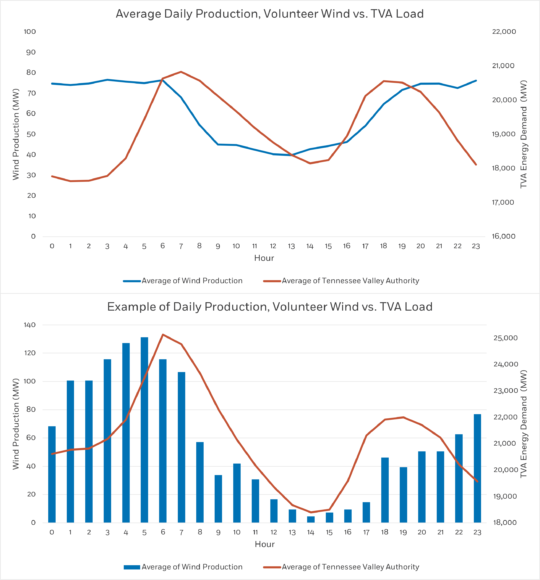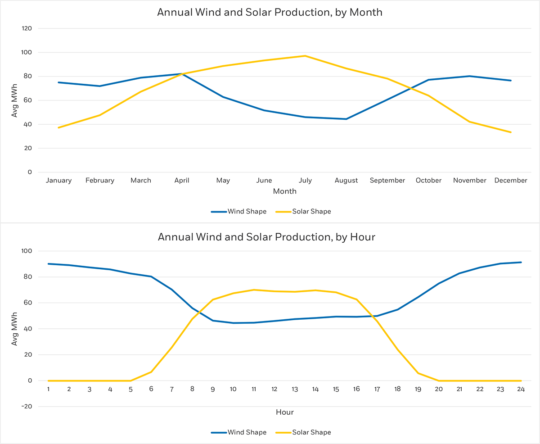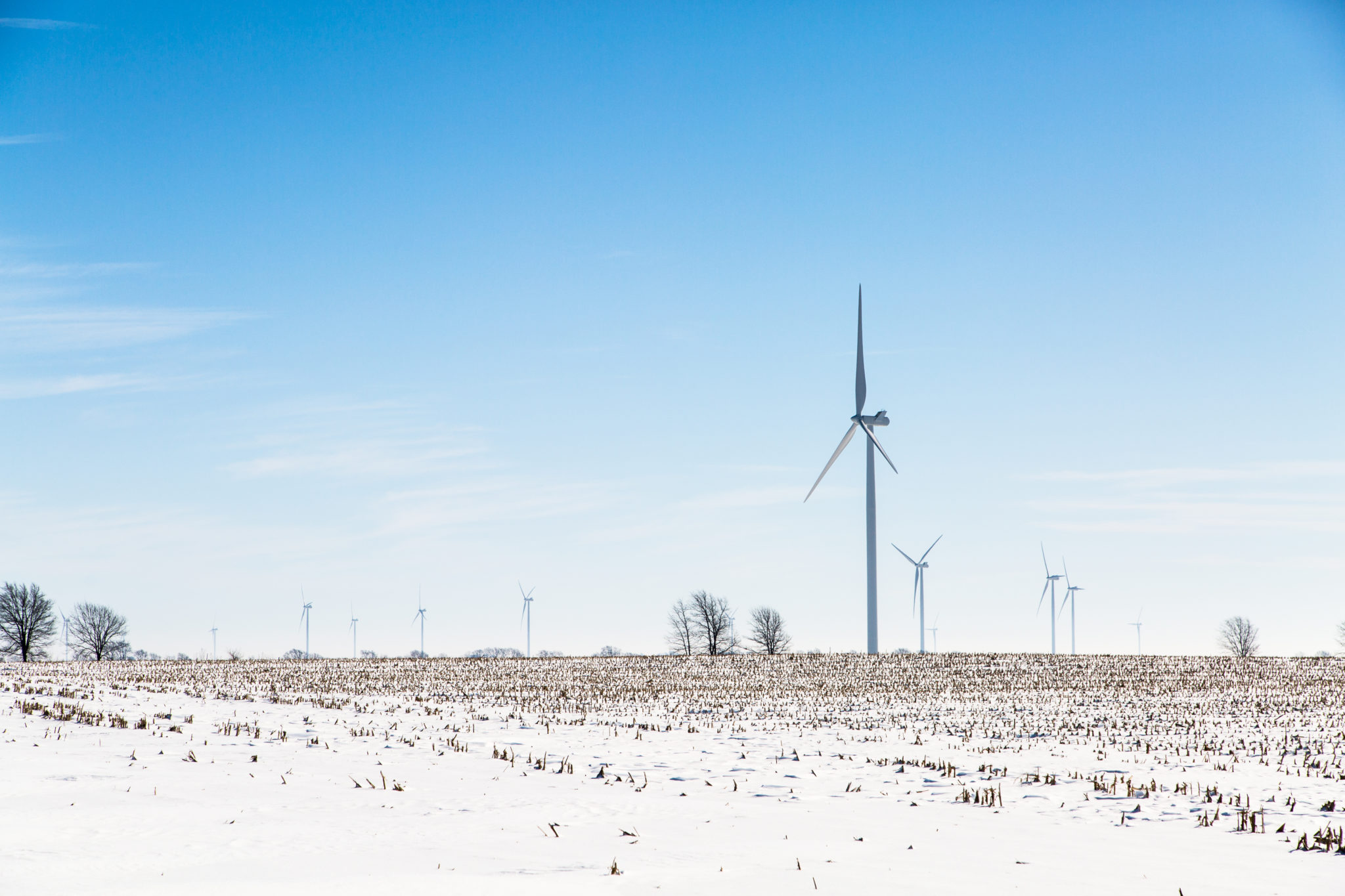Reducing the Cost of Energy Day and Night, Throughout the Year
Wind and solar are complementary for managing “peak-demand” costs.
Many people think of “on-peak” energy hours as sweltering summer afternoons when air conditioners are blasting and people are returning home from work to cook dinner. But in certain places, on-peak also includes chilly winter nights and icy mornings when electric-powered heat strains the grid to keep homes and businesses warm in frigid temperatures.
In states like Tennessee and Virginia, especially in the winter, customers pay higher rates for on-peak, or “peak-demand,” hours. In part, this is because utilities must dispatch less efficient generators during peak-demand times to meet customers’ needs.
Earlier this winter, many utilities experienced price spikes firsthand as January’s arctic weather blanketed much of the United States. In the below-freezing temperatures, consumers used more gas to heat their homes and businesses, depleting the supply for utilities to burn in power plants. Electricity prices surged to their highest in years across several regions of the country.
The solution—perhaps unexpected to some—is wind power.
For power customers, the gusts of wind blowing through parkas after the sun sets provide a low-cost and clean solution to heating homes and businesses.
On average, wind produces more power at night than during the day, and seasonally it produces more during the winter months. Since wind has no marginal fuel cost, it reduces the overall burden on a utility company during on-peak times and can result in lower costs over the long term for ratepayers.


Some commercial and industrial customers, such as manufacturers, operate their plants 24/7. In recent years, these C&I customers have become the largest purchasers of renewable energy. For them, the problem with looking to solar alone is that it only provides power during the day. For corporations that wish to reduce their overall energy spending, purchasing power from a wind project at a fixed price can mitigate on-peak costs.
A combination of renewable technologies adds diversity and resilience to the grid by making it less reliant on a single source of energy.
For an even more comprehensive approach to renewable energy procurement, progressive utilities and corporates are considering wind and solar to better match their energy consumption with purchased renewable generation. (Cue the meme “Why not both?”)
Because solar produces during the daytime, and for longer periods during the summer months, a hybrid wind and solar strategy for securing energy can provide customers with renewable energy around the clock. A combination of renewable technologies adds diversity and resilience to the grid by making it less reliant on a single source of energy.
Apex Clean Energy recently provided a hybrid solution for Fort Hood, the largest active-duty armored U.S. military garrison in the world. Phantom Solar, located on-post, and Cotton Plains Wind, sited about 350 miles away, generate over 65 megawatts of clean energy and supply about half of Fort Hood’s current annual energy consumption. Together, the wind and solar projects deliver energy independence and, by the military’s estimate, will save taxpayers an estimated $168 million over the life of the project.
Apex’s industry-leading development pipeline enables us to partner with corporations and utilities to develop solutions that provide clean energy products for a customer’s needs, no matter how diverse or specific, and at all times of the day and year.

